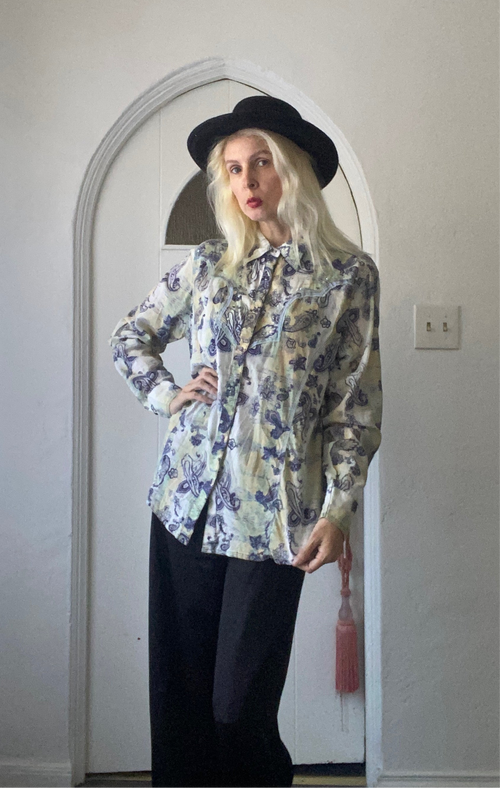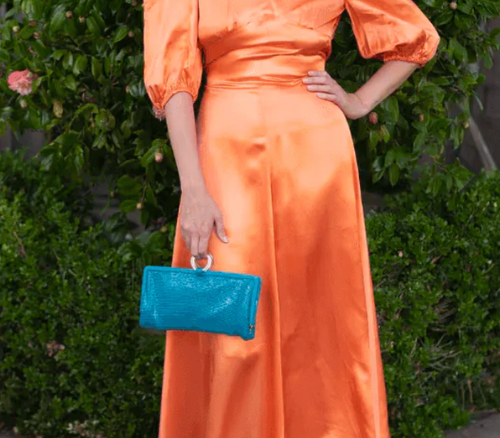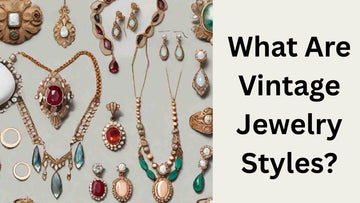Vintage jewelry holds a timeless charm that transcends eras, captivating admirers with its unique designs and rich history. From the intricate Art Deco pieces of the 1920s to the bold and glamorous styles of the 1980s, vintage jewelry offers a fascinating glimpse into past fashions and cultural moments. But what are vintage jewelry styles, and what exactly defines these iconic pieces across different decades? In this blog post, we’ll explore the captivating world of vintage jewelry styles, uncovering their distinctive characteristics, the stories behind them, and how you can incorporate these elegant treasures into your modern wardrobe. Whether you're a seasoned collector or simply curious about the allure of vintage gems, this guide will help you appreciate the artistry and nostalgia that vintage jewelry embodies.
Vintage Jewelry: What Makes a Piece Vintage?
Vintage jewelry holds a special charm that sets it apart from modern pieces, but what exactly makes a piece truly "vintage"? Generally, vintage jewelry refers to items that are at least 20 to 30 years old, often reflecting the distinctive styles and craftsmanship of a particular era. Unlike antique jewelry, which is typically over 100 years old, vintage pieces capture the design trends from the early to late 20th century. What truly defines vintage jewelry is not just its age, but the unique characteristics that embody the spirit of its time—whether it’s the bold geometric shapes of Art Deco, the romantic flourishes of the Victorian era, or the playful, colorful designs of the Retro period. These pieces often showcase meticulous handcrafting techniques, use of period-specific materials, and design elements that are seldom found in contemporary jewelry. Collectors and enthusiasts treasure vintage jewelry not only for its beauty but also for the rich history and stories each piece carries, making it a timeless addition to any collection.
Vintage Jewelry Styles by Era
Vintage jewelry offers a fascinating glimpse into the fashion and cultural trends of different time periods. Each era brought its own unique style, craftsmanship, and materials, making vintage pieces not only beautiful but also rich in history. Understanding vintage jewelry styles by era can help you appreciate their distinct charm and choose pieces that resonate with your personal taste.
Victorian Era (1837-1901)
Victorian jewelry is characterized by intricate designs, often featuring romantic motifs like hearts, flowers, and bows. This era is divided into three phases: Early Victorian (Romantic), Mid-Victorian (Grand), and Late Victorian (Aesthetic). Materials like gold, silver, and gemstones such as garnets, amethysts, and turquoise were popular. Mourning jewelry, made from jet or featuring dark enamel, was also prevalent.
Edwardian Era (1901-1915)
The Edwardian period is known for its delicate elegance and feminine designs. Jewelry from this era often incorporates platinum and diamonds, with intricate filigree work and lace-like patterns. Pearls and sapphires were also common, reflecting the sophisticated and graceful aesthetic of the time.
Art Deco Era (1920s-1930s)
Art Deco jewelry is bold and geometric, reflecting the modernism and glamour of the Roaring Twenties. Pieces often feature symmetrical designs, bright gemstones like emeralds, rubies, and sapphires, and contrasting materials such as onyx and diamonds. This style is perfect for those who love striking, eye-catching accessories.
Retro Era (1940s-1950s)
The Retro period embraced larger, more dramatic designs with a touch of Hollywood glamour. Jewelry often features oversized gemstones, bold colors, and motifs like bows, flowers, and stars. Gold was frequently used, sometimes combined with synthetic stones, reflecting the post-war optimism and exuberance.
Exploring vintage jewelry by era not only helps you identify authentic pieces but also allows you to connect with the stories and artistry behind each style. Whether you’re a collector or simply love timeless accessories, vintage jewelry offers endless inspiration and elegance.
Characteristics and Materials of Vintage Jewelry
Vintage jewelry is celebrated for its timeless beauty, intricate craftsmanship, and unique designs that reflect the fashion and cultural influences of bygone eras. One of the defining characteristics of vintage pieces is their attention to detail. Unlike many mass-produced modern accessories, vintage jewelry often features hand-crafted elements such as filigree work, milgrain edging, and intricate engraving that showcase the artisan’s skill.
Materials used in vintage jewelry vary widely depending on the period, but they typically include high-quality metals like yellow gold, rose gold, white gold, and sterling silver. Platinum also became popular during the Art Deco era for its durability and bright, silvery appearance. Gemstones are a prominent feature as well, with diamonds, sapphires, rubies, and emeralds frequently adorning pieces. In addition, vintage jewelry sometimes incorporates less conventional materials such as enamel, pearls, coral, and semi-precious stones, adding unique colors and textures.
Moreover, the patina and slight wear on vintage jewelry contribute to its charm, often making each piece truly one-of-a-kind. Whether it’s a delicately set cocktail ring from the 1920s or an ornate brooch from the Victorian era, vintage jewelry’s distinctive characteristics and diverse materials continue to captivate collectors and fashion enthusiasts alike.
Identify Authentic Vintage Jewelry
Identifying authentic vintage jewelry is essential for collectors and enthusiasts who want to ensure they are investing in genuine pieces with historical value. Authentic vintage jewelry typically refers to pieces that are at least 20 to 30 years old, often showcasing styles and craftsmanship unique to their era. To determine authenticity, start by examining the materials and construction techniques used. Vintage jewelry often features high-quality metals like gold or sterling silver and may include natural gemstones or intricate hand-crafted details that are less common in modern reproductions. Look for hallmarks or maker’s marks, which can provide clues about the piece’s origin and age; these stamps are usually found on the inside of rings or clasps of necklaces and bracelets. Additionally, signs of wear and patina can indicate genuine age, as true vintage pieces develop subtle imperfections over time. Researching the design styles popular during specific periods—such as Art Deco’s geometric shapes or the bold colors of the Retro era—can also help you identify whether a piece aligns with its claimed vintage decade. By paying close attention to these characteristics, you can confidently distinguish authentic vintage jewelry from modern imitations and appreciate the timeless beauty of these treasured adornments.
Incorporating Vintage Jewelry into Modern Fashion
Incorporating vintage jewelry into modern fashion is a wonderful way to add unique character and timeless elegance to your everyday look. Vintage pieces, with their intricate designs and rich histories, can serve as standout accessories that elevate even the simplest outfits. To seamlessly blend vintage jewelry with contemporary styles, consider pairing a delicate antique necklace with a minimalist blouse or layering bold vintage rings with sleek, modern ensembles. Mixing and matching different eras—such as combining Art Deco earrings with a casual streetwear outfit—can create an eye-catching contrast that feels fresh and intentional. Additionally, vintage brooches can be repurposed as statement pins on jackets or bags, adding a touch of sophistication. Ultimately, the key to incorporating vintage jewelry into modern fashion is to balance old and new thoughtfully, allowing these timeless treasures to shine while complementing your personal style.
Caring for and Preserving Vintage Jewelry
Vintage jewelry holds a timeless charm and often carries sentimental value, making proper care and preservation essential to maintain its beauty and integrity. To ensure your treasured pieces last for generations, start by handling them with clean, dry hands and storing them separately in soft-lined boxes or pouches to avoid scratches and tangling. Avoid exposing vintage jewelry to harsh chemicals, perfumes, or excessive moisture, as these can damage delicate metals and gemstones. Regularly clean your pieces gently using a soft cloth or a mild jewelry cleaner specifically formulated for vintage items—never use abrasive materials or ultrasonic cleaners, which can be too harsh. Additionally, it's wise to have your vintage jewelry inspected periodically by a professional jeweler who specializes in antique pieces to check for any loose settings or wear that may require repair. By following these simple yet effective care practices, you can preserve the unique beauty and history of your vintage jewelry for years to come.







